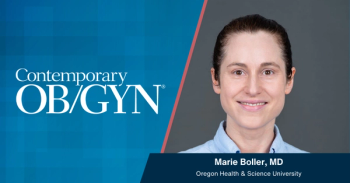Key takeaways:
- Higher consumption of ultra-processed foods (UPFs) is significantly associated with increased risk of early-onset conventional adenomas, a precursor to colorectal cancer.
- The study analyzed more than 29,000 participants from the Nurses’ Health Study, focusing on adults aged under age 50 years.
- Individuals with the highest UPF intake had a 45% greater risk of developing early-onset adenomas compared with those consuming the least.
- UPF intake did not significantly affect risk for serrated lesions, another type of colorectal cancer precursor.
- Findings highlight diet as a key factor in early-onset colorectal carcinogenesis, underscoring the importance of reducing UPF consumption and identifying additional risk factors.
Researchers from Mass General Brigham have identified increased rates of early-onset colorectal cancer (EOCRC) precursors in adults with greater consumption of ultra-processed foods (UPFs), publishing their findings in JAMA Oncology.1
A rise in colorectal cancer diagnoses has been reported in adults aged 50 years or younger residing in high-income countries. This data has highlighted UPF as a potential source of these trends, indicating a need for closer investigation.1
“Our findings support the importance of reducing the intake of ultra-processed foods as a strategy to mitigate the rising burden of early-onset colorectal cancer,” said Andrew Chan, MD, MPH, senior author and gastroenterologist in the Mass General Brigham Cancer Institute.1
Data collection and dietary assessment
The prospective cohort study was conducted to evaluate the association between UPF intake and EOCRC precursor risks, specifically focusing on conventional adenomas and serrated lesions.2 Participants were included from the Nurses’ Health Study, which enrolled female nurses aged 25 to 42 years between 1947 and 1964.
These patients provided lifestyle factors alongside family and medical history through mailed biennial questionnaires from 1989 onward. Dietary habits were reported every 4 years in food-frequency questionnaires (FFQs). Patients returning the 1991 questionnaire were eligible for inclusion.2
Exclusion criteria included missing date of birth, not receiving lower endoscopy after 1991, prior cancer diagnosis before endoscopy, and history of colorectal polyps or inflammatory bowel disease. After exclusion, patients aged under 50 years on June 1, 1991, were included and underwent follow-up through June 1, 2015.2
A semiquantitative FFQ allowed investigators to evaluate patient UPF intake. Categories of food included:2
- Unprocessed or minimally processed foods
- Processed culinary ingredients
- Processed foods
- UPFs
Case definitions and lesion characteristics
Cases included patients with tubular, tubulovillous, or villous adenomas and serrated lesions, while controls included patients with no colorectal polyp diagnosis following lower endoscopy. Separate high-grade dysplasia data was also collected. Categories of lesions included proximal and rectum.2
Adenomas of at least 1 cm in size or with villous or tubulovillous histology, high-grade dysplasia, or at least 3 adenomas were considered high-malignancy risk, while the remainder were low malignancy risk. Covariates included age, endoscopy period, number of endoscopies, time since last endoscopy, reason for endoscopy, and body mass index.2
There were 29,105 participants included in the final analysis, undergoing a median of 1 endoscopy. These patients were aged a mean 45.2 years, and increases in body mass index, pack-years of smoking, type 2 diabetes prevalence, and symptom-driven endoscopies were reported in those with greater UPF intake.2
Association between UPF intake and adenoma risk
A median of 5.7 servings per day was reported for UPF intake, contributing to 34.8% of total daily calories and 28.2% of total dietary servings. There were 1189 early-onset conventional adenoma cases and 1598 serrated lesion cases reported in the study population.2
An adjusted odds ratio (aOR) of 1.45 was reported for developing early-onset conventional adenomas among patients with in highest UPF intake quintile vs the lowest quintile, indicating a significant increase in risk. However, the aOR for serrated lesions was 1.04, which was not significant.2
Histology, polyp size, malignancy risk, and anatomical location did not significantly influence the observed associations. Findings were consisted across subgroups, and early-onset conventional adenomas were more likely from increased artificially sweetened beverage intake, with an aOR of 1.21.2
Future research needs
Overall, the data indicated increased EOCRC precursor risk from greater UPF intake. Investigators concluded diet is a key component of early-onset colorectal carcinogenesis, highlighting the need to improve dietary quality.2
“Diet isn't a complete explanation for why we're seeing this trend — we see many individuals in our clinic with early onset colon cancer who eat very healthy diets,” said Chan.1 “Identifying other risk factors for early onset colorectal cancer is one of the focuses of the work that we're leading here.”
References
- Study finds adults who consumed more ultra-processed foods had higher rates of precursors of early-onset colorectal cancer. Mass General Brigham. November 13, 2025. https://www.eurekalert.org/news-releases/1105784.
- Wang C, Du M, Kim H, et al. Ultraprocessed food consumption and risk of early-onset colorectal cancer precursors among women. JAMA Oncol. 2025. doi:10.1001/jamaoncol.2025.4777
















